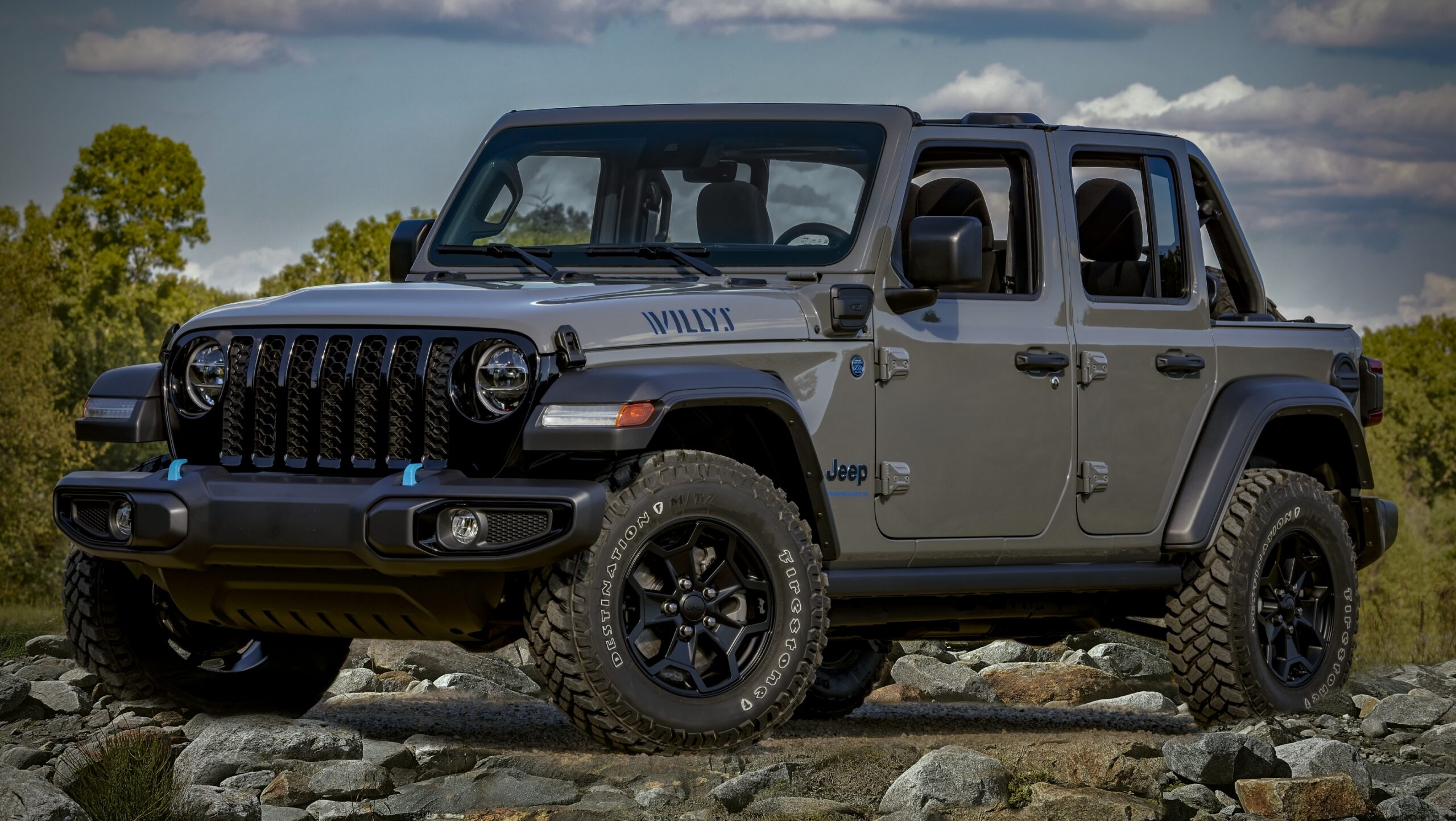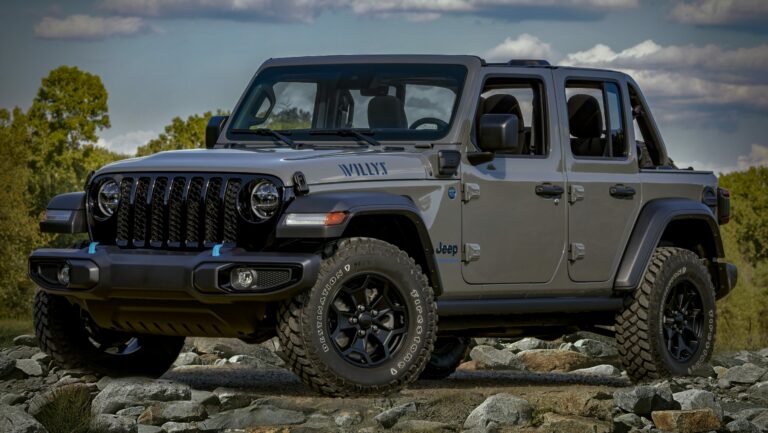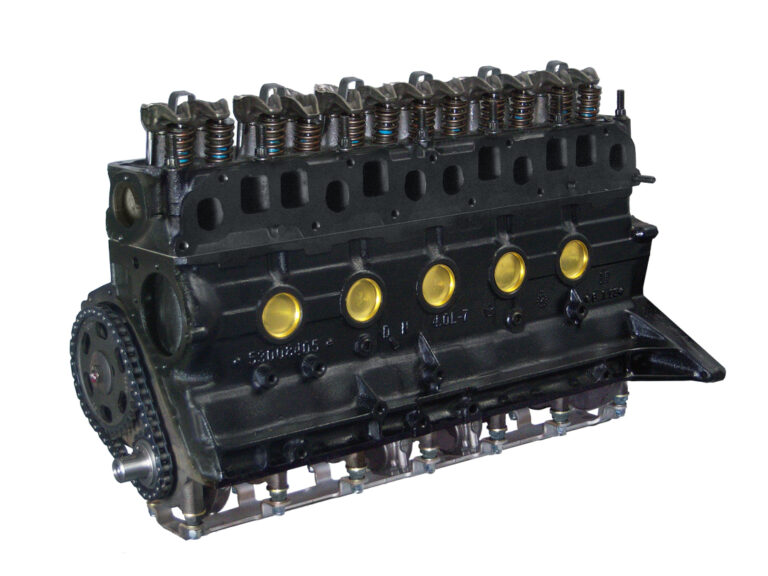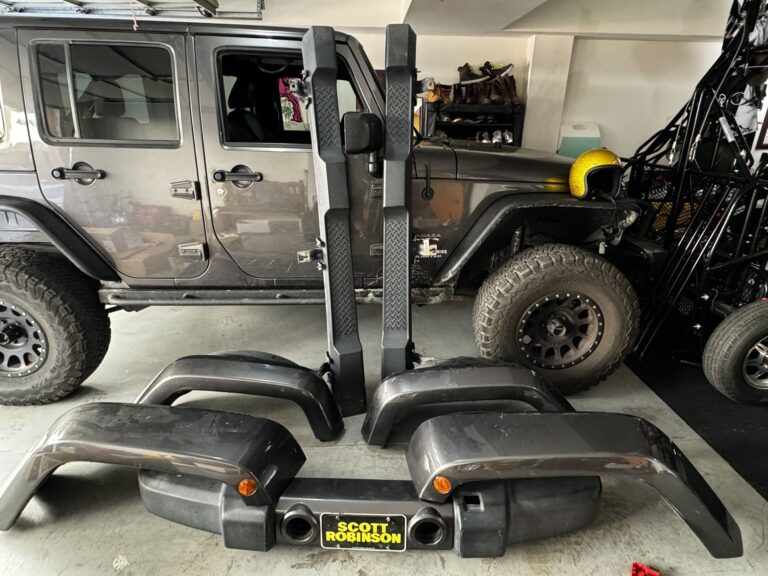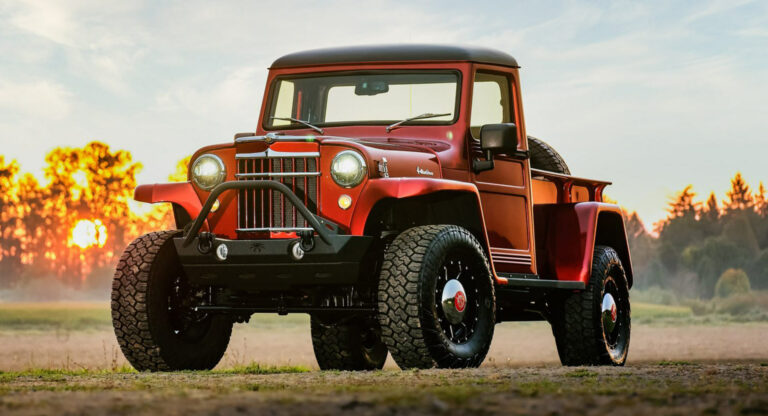Unlocking Longevity: The World of Jeep Commander Parts For Sale
Unlocking Longevity: The World of Jeep Commander Parts For Sale jeeps.truckstrend.com
The Jeep Commander (XK/XH chassis), produced from 2006 to 2010, carved out a unique niche in the automotive landscape. As Jeep’s first three-row, seven-passenger SUV since the Grand Wagoneer, it offered a distinctive blend of rugged capability, family-friendly space, and a commanding presence. Despite its relatively short production run, the Commander built a loyal following thanks to its robust powertrains (including the durable 3.7L V6, potent 4.7L V8, and the mighty 5.7L Hemi V8, plus a 3.0L CRD diesel in some markets) and legendary Jeep 4×4 systems. For owners looking to keep their Commanders on the road, whether for daily commutes, adventurous off-roading, or simply as a beloved family vehicle, the availability of Jeep Commander parts for sale is not just important—it’s essential. This comprehensive guide will navigate the vast world of Commander parts, offering insights, tips, and resources to help you maintain, repair, and even upgrade your vehicle for years to come.
Why Invest in Jeep Commander Parts?
Unlocking Longevity: The World of Jeep Commander Parts For Sale
Owning a discontinued vehicle like the Jeep Commander comes with unique considerations, but the continued availability of parts is a significant advantage. Investing in Jeep Commander parts for sale is crucial for several reasons:
- Maintenance & Repairs: Like any vehicle, the Commander requires regular maintenance (oil changes, brake pads, filters) and occasional repairs (worn suspension components, engine sensors, electrical issues). Access to the right parts ensures your vehicle runs safely and efficiently.
- Restoration & Preservation: For enthusiasts looking to restore a Commander to its former glory, or simply preserve its condition, sourcing specific OEM or high-quality aftermarket parts is vital. This includes everything from interior trim pieces to body panels and engine components.
- Customization & Upgrades: The Commander shares a platform with the WK Grand Cherokee, opening up a world of aftermarket customization. Owners often seek Jeep Commander parts for sale to enhance off-road capability (lift kits, heavy-duty bumpers, rock sliders), improve performance (exhaust systems, air intakes), or upgrade aesthetics (lighting, wheels).
- Cost-Effectiveness: For many, keeping a reliable Commander on the road is far more economical than purchasing a new vehicle. Strategic parts procurement can extend the life of your SUV, saving you significant money in the long run.
- Longevity: With proper care and timely replacement of worn components, the Jeep Commander is a robust vehicle capable of hundreds of thousands of miles. High-quality parts are the cornerstone of this longevity.

Navigating the Landscape: Types of Jeep Commander Parts Available
When searching for Jeep Commander parts for sale, you’ll encounter various categories, each with its own advantages and disadvantages. Understanding these types is key to making informed purchasing decisions.
- OEM (Original Equipment Manufacturer) Parts: These are parts made by the original manufacturer (Mopar, in Jeep’s case) or by a supplier contracted by the manufacturer.
- Pros: Guaranteed fit and function, often come with a warranty, maintain original vehicle specifications and performance.
- Cons: Typically the most expensive option.
- Where to Find: Jeep dealerships, authorized online Mopar parts retailers.
- Aftermarket Parts: Produced by companies other than the original vehicle manufacturer, these parts are designed to be compatible with the Commander.
- Pros: Often more affordable than OEM, vast selection including performance upgrades and specialized components not available from the OEM, competitive pricing.
- Cons: Quality can vary significantly; some aftermarket parts may not fit as precisely or perform as well as OEM. Warranty coverage can also vary.
- Examples: Suspension components (lift kits, shocks), exhaust systems, intake systems, brake upgrades, lighting, various accessories.
- Used/Salvage Parts: These are components salvaged from other Commanders, typically from junkyards or salvage operations.
- Pros: Most cost-effective option, excellent for finding rare or discontinued parts like specific interior trims, body panels, or larger assemblies (engines, transmissions). Environmentally friendly.
- Cons: No warranty (usually), condition can vary widely, requires thorough inspection, may have hidden damage.
- Where to Find: Local junkyards/auto recyclers, online salvage parts databases, specialized Jeep forums.
- Remanufactured Parts: These are used parts that have been disassembled, cleaned, inspected, and had worn components replaced with new ones to meet or exceed original specifications.
- Pros: More affordable than new OEM, often come with a warranty (sometimes equivalent to new parts), environmentally friendly (recycles components).
- Cons: Not available for all parts, quality depends on the rebuilder.
- Examples: Alternators, starters, brake calipers, power steering pumps, engine long blocks, transmissions.
Your Parts Compass: Where to Find Jeep Commander Parts For Sale
The digital age has made finding Jeep Commander parts for sale easier than ever, but knowing where to look can save you time and money.
- Online Retailers:
- Large Auto Parts Sites: Websites like RockAuto, PartsGeek, Summit Racing, Quadratec, and others offer extensive catalogs of both OEM and aftermarket parts. They often have detailed search filters for year, make, model, and engine, making it easy to find specific Commander parts.
- E-commerce Platforms: Amazon and eBay host numerous sellers offering new, used, and aftermarket Commander parts. Exercise caution and check seller ratings and return policies.
- Specialized Jeep Parts Sites: Many online stores focus exclusively on Jeep parts, offering a curated selection and knowledgeable customer service.
- Dealerships: While often the most expensive option, authorized Jeep dealerships are the primary source for new OEM parts and can be crucial for warranty-related issues or hard-to-find components.
- Local Auto Parts Stores: Chains like AutoZone, Advance Auto Parts, O’Reilly Auto Parts, and NAPA often stock common maintenance items (filters, fluids, spark plugs, basic brake components) for the Jeep Commander. They can be convenient for immediate needs.
- Salvage Yards/Junkyards: For used body parts, interior components, or larger assemblies, a visit to a local salvage yard or searching online salvage databases can yield significant savings. Always inspect parts thoroughly before purchase.
- Specialized Jeep Forums & Social Media Groups: Online communities dedicated to the Jeep Commander (or WK Grand Cherokee, due to platform commonality) are invaluable resources. Members often sell used parts, offer advice, and can point you to obscure suppliers.
- Auto Auctions: Sometimes, entire Commanders are auctioned off for parts, which can be a good source for multiple components if you’re prepared to dismantle.
Making the Right Choice: Key Considerations When Buying Commander Parts
Purchasing Jeep Commander parts for sale requires careful consideration to ensure you get the right component and value for your money.
- Vehicle Specifics: The Commander’s year (2006-2010), trim level, and especially engine size (3.7L V6, 4.7L V8, 5.7L Hemi V8, 3.0L CRD Diesel) can significantly impact part compatibility. Always verify fitment.
- VIN Number: Your Vehicle Identification Number (VIN) is your most powerful tool. Most reputable parts suppliers can use your VIN to guarantee exact fitment for OEM parts. Even for aftermarket, having your VIN handy helps confirm compatibility.
- Part Number Verification: If replacing an existing part, try to find the original part number on the component itself. Cross-referencing this number online is the best way to ensure an exact match.
- Quality vs. Price: While budget is a factor, don’t always opt for the cheapest option, especially for critical components like brakes, steering, or engine parts. A cheap, low-quality part can fail prematurely, costing more in the long run.
- Warranty & Return Policy: Understand the warranty offered by the seller and manufacturer. For online purchases, always check the return policy in case the part doesn’t fit or is defective.
- Installation Difficulty: Consider whether you’ll be installing the part yourself or hiring a professional. Some parts require specialized tools or expertise. Factor installation costs into your budget.
Smart Shopping: Tips for a Successful Jeep Commander Parts Purchase
- Do Your Research: Before buying, read reviews of the part and the seller. Compare prices from multiple sources.
- Ask Questions: Don’t hesitate to contact the seller or parts specialist if you have doubts about compatibility or quality.
- Bundle Purchases: If buying multiple parts, see if you can get a discount or save on shipping by purchasing from a single vendor.
- Check Shipping Costs: Especially for heavy or bulky items, shipping can add significantly to the total cost.
- Inspect Upon Arrival: As soon as your part arrives, open the package and inspect it for any damage or discrepancies before installation.
Overcoming Obstacles: Challenges and Solutions in Sourcing Commander Parts
Despite the generally good availability, sourcing Jeep Commander parts for sale can present a few challenges:
- Discontinued Model: As production ended in 2010, new OEM stock for some less common parts may be limited or entirely depleted.
- Solution: Focus on aftermarket, used, or remanufactured options. Leverage online communities for leads on rare finds.
- Finding Specific Trim/Color Parts: Interior trim pieces or exterior components in specific colors can be difficult to match perfectly.
- Solution: Salvage yards are your best bet. Be prepared to search or potentially repaint/re-dye components.
- Quality Control for Used Parts: The condition of used parts can be a gamble.
- Solution: Buy from reputable salvage yards that offer some form of guarantee. Inspect parts thoroughly in person if possible, or request detailed photos and descriptions from online sellers.
- Counterfeit Parts: While less common for older vehicles, be wary of suspiciously cheap "OEM" parts from unknown sources.
- Solution: Stick to trusted retailers and dealerships for genuine OEM components.
Empowering Your Commander Journey: Practical Advice
To truly maximize your Jeep Commander’s lifespan and enjoyment, consider these practical tips:
- Proactive Maintenance: Don’t wait for a part to fail. Follow your Commander’s maintenance schedule. Replacing wear items before they break can prevent larger, more expensive problems.
- Build a Relationship with a Mechanic: Find a trusted mechanic familiar with Jeeps (especially the WK/XK platform) who can advise you on parts and installation.
- Join the Community: Engage with Jeep Commander owner groups online. These communities are a wealth of knowledge for troubleshooting, finding parts, and getting advice.
- Keep Records: Maintain a detailed history of all maintenance and repairs, including part numbers and where they were purchased. This can be invaluable for future reference.
Estimated Pricing Guide for Jeep Commander Parts
Please note that these are estimated price ranges in USD and can vary significantly based on the part’s type (OEM, aftermarket, used, remanufactured), seller, condition, and current market demand.
| Part Category | Specific Part | Estimated Price Range (USD) | Notes |
|---|---|---|---|
| Routine Maintenance | Oil Filter | $5 – $20 | OEM or Aftermarket |
| Air Filter | $10 – $30 | OEM or Aftermarket | |
| Cabin Air Filter | $15 – $40 | OEM or Aftermarket | |
| Spark Plugs (per set of 6/8) | $30 – $100 | Varies by engine (V6/V8), brand. | |
| Brakes | Front Brake Pads (set) | $30 – $100 | Aftermarket; OEM higher. |
| Front Brake Rotors (each) | $40 – $120 | Aftermarket; OEM higher. | |
| Brake Caliper (remanufactured) | $50 – $150 | Remanufactured; new OEM higher. | |
| Suspension & Steering | Front Shock Absorber (each) | $50 – $150 | Aftermarket; OEM or premium brands higher. |
| Control Arm (each) | $60 – $200 | Aftermarket; OEM higher. | |
| Tie Rod End (each) | $25 – $75 | Aftermarket; OEM higher. | |
| Engine Components | Water Pump | $70 – $250 | Aftermarket; OEM higher. |
| Alternator (remanufactured) | $120 – $350 | Remanufactured; new OEM higher. | |
| Starter Motor (remanufactured) | $100 – $300 | Remanufactured; new OEM higher. | |
| O2 Sensor | $40 – $150 | Varies by location (upstream/downstream). | |
| Body & Exterior | Headlight Assembly (each) | $100 – $400 | Aftermarket; OEM higher. Used can be $50-$200. |
| Taillight Assembly (each) | $80 – $250 | Aftermarket; OEM higher. Used can be $40-$150. | |
| Fender (used) | $100 – $350 | Used from salvage. New OEM significantly higher. | |
| Rear Bumper Cover (used) | $150 – $500 | Used from salvage. New OEM significantly higher. | |
| Interior | Power Window Switch | $30 – $100 | Aftermarket or used; OEM higher. |
| Door Panel (used) | $75 – $300 | Used from salvage. | |
| Performance/Upgrade | 2-inch Lift Kit (basic) | $250 – $700 | Aftermarket (spacers, basic shocks). Full kits much higher. |
| Aftermarket Exhaust System | $400 – $1,000+ | Varies by brand and material. |
Frequently Asked Questions About Jeep Commander Parts For Sale
Q1: Is it hard to find parts for a Jeep Commander since it’s discontinued?
A1: Generally, no. While new OEM stock for some very specific or less common parts might be limited, the Commander shares many components with the popular WK Grand Cherokee (2005-2010), ensuring a healthy supply of aftermarket, used, and remanufactured parts. Common maintenance and repair items are readily available.
Q2: Are OEM parts always better than aftermarket parts for the Commander?
A2: Not necessarily "always." OEM parts guarantee original fit and quality. However, many aftermarket companies produce parts that meet or exceed OEM specifications, often at a lower price. For performance upgrades, aftermarket is often the only option. The key is to research reputable aftermarket brands.
Q3: Can I use parts from a Grand Cherokee (WK) on my Commander (XK)?
A3: Yes, extensively! The Jeep Commander (XK) is built on the same platform as the WK Grand Cherokee. Many mechanical, suspension, drivetrain, and even some interior/exterior components are interchangeable. Always cross-reference part numbers or confirm compatibility with a VIN check, but this interchangeability significantly broadens the availability of parts.
Q4: What’s the best way to ensure I get the right part for my Commander?
A4: The best way is to provide your vehicle’s VIN (Vehicle Identification Number) to the parts supplier. This allows them to look up the exact specifications of your vehicle. Failing that, knowing your Commander’s exact year, engine size, and trim level is crucial. If you have the old part, find its original part number.
Q5: How much does it cost to maintain a Jeep Commander annually?
A5: Maintenance costs vary widely based on mileage, driving habits, and whether you do DIY repairs or use a professional. On average, you can expect to spend between $400-$800 annually for routine maintenance (oil changes, tires, brakes, filters). Unexpected repairs can add significantly to this. Sourcing Jeep Commander parts for sale intelligently can help manage these costs.
Q6: Are there any common parts that fail on the Commander?
A6: Like many vehicles of its era, some common issues can include front suspension components (ball joints, control arm bushings), certain electrical components (TIPM module, window regulators), and potential leaks from the water pump or power steering system as they age. Regular maintenance and proactive replacement of known wear items can mitigate these.
The Enduring Legacy: A Final Word on Jeep Commander Parts
The Jeep Commander remains a capable and distinctive SUV, offering a blend of utility and classic Jeep ruggedness that continues to appeal to many. The robust market for Jeep Commander parts for sale ensures that owners have ample resources to keep these vehicles running strong for years to come. By understanding the types of parts available, knowing where to source them, and making informed decisions based on quality and compatibility, you can confidently maintain, repair, and even enhance your Commander. The legacy of this unique seven-seater Jeep is far from over, thanks to a dedicated community and a thriving parts ecosystem that helps every Commander continue its journey, wherever the road (or trail) may lead.
